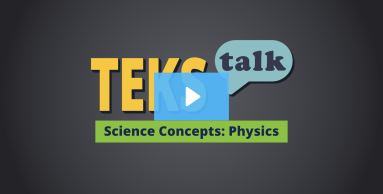- Science
- Grade 9
- Scientific and engineering practices
Back to TEKS search
PHYS.1.F
The student is expected to organize quantitative and qualitative data using bar charts, line graphs, scatter plots, data tables, labeled diagrams, and conceptual mathematical relationships;

Knowledge and Skills Statement
Scientific and engineering practices. The student, for at least 40% of instructional time, asks questions, identifies problems, and plans and safely conducts classroom, laboratory, and field investigations to answer questions, explain phenomena, or design solutions using appropriate tools and models.
Supporting Information
Research
Emanovský, Petr, and Dalibor Gonda."Mathematical Calculations Within Physics Lessons and Their Popularity Among Learners." Journal on Efficiency and Responsibility in Education and Science 13, no. 4 (2020): 204-211. http://dx.doi.org/10.7160/eriesj.2020.130404
Summary: The authors conducted research on learners' attitudes towards using mathematical calculations within physics lessons. The data analysis data shows slightly negative learners' attitude to mathematical calculations and some particular differences between grades and genders.
